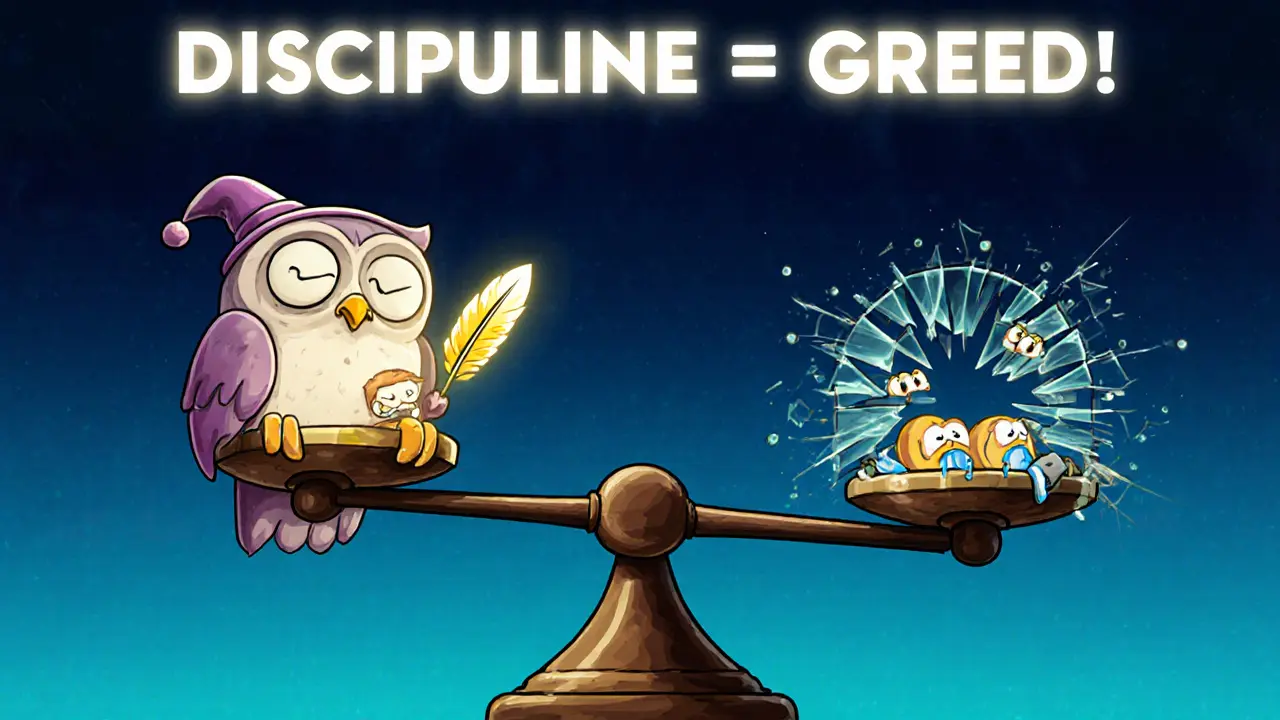 Nov, 8 2025
Nov, 8 2025
Leverage Calculator
Calculate Your Trading Risk
Enter your deposit amount and leverage ratio to see your position size, potential gains/losses, and liquidation risk.
Your Trading Position
Position Size
$0
Liquidation Risk
$0
Potential Gains/Losses
5% Price Increase
$0.00 (+0.00%)
5% Price Decrease
$0.00 (-0.00%)
When you trade crypto with leverage, you’re not just betting on price movements-you’re borrowing money to make your bet bigger. A $100 deposit can control a $10,000 position if you use 100x leverage. Sounds powerful? It is. But here’s the truth: leverage doesn’t make you smarter. It just makes your mistakes more expensive.
How Leverage Actually Works
Leverage lets you borrow funds from a crypto exchange to open a position larger than your account balance. If you put up $500 and use 20x leverage, you control a $10,000 trade. If Bitcoin goes up 5%, your $10,000 position gains $500. That’s a 100% return on your $500. Sounds amazing, right? But if Bitcoin drops 5%, you lose $500-your entire deposit. No profit. No second chance. Just gone. This isn’t magic. It’s math. And the math favors the exchange, not you. Every leveraged trade has three key parts:- Margin: The money you put up as collateral. For 10x leverage, you need 10% of the position value. For 50x, you only need 2%.
- Liquidation price: The price at which your position gets automatically closed because you don’t have enough margin left. This is where most traders get wiped out.
- Funding rate: A fee paid every 8 hours between long and short traders to keep the futures price close to the real market price. It can cost you money even if the market doesn’t move.
Why Leverage Is a Trap for Beginners
Most people start with leverage because they see videos of someone turning $500 into $18,000 in a week. They think, “I can do that too.” But those videos are outliers. The real story is buried in the data. A 2022 study from the University of California found that retail traders using leverage above 10x had a 78.3% chance of losing their entire account within six months. At 5x leverage or lower, that number dropped to 42.1%. That’s not a small difference-it’s life-changing. And it’s not just theory. During the May 2021 Bitcoin crash, exchanges with 100x leverage saw over 85% of positions liquidated. In the same event, exchanges capped at 25x had only 42% liquidations. The same pattern repeated in May 2022 during the Terra/Luna collapse, when $850 million in leveraged positions vanished in hours. Even experienced traders get caught. One Reddit user lost $3,500 in 11 minutes during the Silicon Valley Bank crisis in March 2023, using 50x leverage. He wasn’t reckless-he was confident. That’s the danger.What the Exchanges Don’t Tell You
Crypto exchanges want you to use high leverage. More leverage means more trading volume. More volume means more fees. They make money whether you win or lose. Here’s what they hide:- They don’t warn you that liquidations often happen during low-liquidity hours-late at night or right after a major news drop-when prices gap violently.
- Some platforms, like Bybit, use partial liquidation to close only part of your position. Others, like Binance, liquidate everything at once. The difference can mean hundreds or thousands in lost money.
- Funding rates can eat into profits over time. If you hold a long position during a period of negative funding, you’re paying short traders every 8 hours. That’s a slow bleed.

Levers of Risk: What Leverage Ratios Actually Mean
Not all leverage is the same. Here’s what you’ll actually find on major platforms in 2025:| Exchange | Max Leverage (Retail) | Regulatory Region | Typical Liquidation Risk |
|---|---|---|---|
| Binance | 125x | Outside US/EU | Very High |
| Bybit | 100x | Global (non-US) | High |
| Kraken | 50x | Global | Medium |
| Coinbase | 5x | US | Low |
| Bitget | 75x | Global | Medium |
What the Experts Say (And Why You Should Listen)
Michael van de Poppe, a crypto analyst with over 350,000 followers, says: “Beginners should never exceed 3x leverage.” He’s not being cautious-he’s being realistic. Changpeng Zhao, CEO of Binance, admitted in a 2023 Bloomberg interview that leverage is a “double-edged sword” and that most retail traders don’t understand the risk. The Financial Conduct Authority (FCA) in the UK found that 82% of retail CFD traders lose money when using leverage. Crypto leveraged trading is just CFDs with different names. And here’s the kicker: 68% of profitable leveraged traders on Binance use stop-loss orders set at 1-2% below their entry point. That’s not luck. That’s discipline.How to Trade Leverage Without Getting Wiped Out
If you’re still considering leverage, here’s how to survive:- Start at 2x or 3x. You don’t need 50x to make money. You need patience and consistency.
- Never risk more than 2% of your account on one trade. If you have $5,000, don’t risk over $100 per trade. That means your stop-loss should be tight.
- Use stop-losses religiously. Set them before you open the trade. Don’t wait for a “better time.”
- Avoid leverage during major news events. Fed announcements, CPI data, or Elon Musk tweets can trigger 10% moves in minutes. You won’t see it coming.
- Turn off funding rates if possible. Use spot trading or non-funding contracts if you’re holding for more than a day.
- Practice first. Use paper trading for 40-60 hours before risking real money. Kraken and Gemini offer free simulators.

The Real Future of Leverage in Crypto
Regulators are catching up. The EU’s MiCA rules, effective August 2023, capped retail leverage at 2x to 5x. The SEC in the US forced exchanges to reduce leverage from 100x to 25x. The UK is pushing for a full ban on retail crypto leverage. Meanwhile, exchanges are adapting. Kraken introduced “adaptive leverage” that automatically reduces your position size when volatility spikes. Bybit now uses insurance funds to prevent full liquidations during flash crashes. The message is clear: high leverage is being phased out for regular people. The days of 100x trades are ending-not because the market changed, but because too many people lost too much money.Final Reality Check
Leverage isn’t a shortcut to wealth. It’s a shortcut to bankruptcy if you don’t treat it like a scalpel-not a sledgehammer. The people who make consistent money in crypto trading don’t use 50x leverage. They use 2x or 3x. They trade slowly. They wait for high-probability setups. They know when to walk away. If you’re reading this because you want to turn $100 into $10,000 in a week, you’re already in danger. The market doesn’t reward greed. It rewards discipline. Leverage is a tool. Most people treat it like a magic wand. That’s why they lose.Frequently Asked Questions
What does 10x leverage mean in crypto trading?
10x leverage means you can control a position worth 10 times your deposit. If you have $100, you can trade $1,000. A 1% price move in your favor gives you a 10% profit on your deposit. But a 1% move against you wipes out 10% of your account. The higher the leverage, the faster you lose money.
Can you lose more than you invest with crypto leverage?
Most major exchanges now have negative balance protection, meaning you can’t lose more than your deposit. But this isn’t guaranteed. Some platforms, especially offshore ones, don’t offer this. Always check the terms. Even with protection, you can still lose your entire account in seconds.
What’s the safest leverage ratio for beginners?
The safest leverage for beginners is 2x to 3x. At this level, you still benefit from price movement without being wiped out by normal market swings. Most successful traders never use more than 5x. High leverage is for gamblers, not investors.
Why do exchanges offer 100x leverage if it’s so dangerous?
Exchanges make money from trading fees, not from your profits. The more you trade, the more they earn-even if you lose. High leverage encourages frequent, high-volume trading. They don’t care if you win or lose; they just want you to keep trading. That’s why they advertise big wins but hide the stats on losses.
How do I know if my position is about to be liquidated?
Every trading platform shows your liquidation price in real time. It’s usually displayed in red near your open position. If the price gets close to that number, you’re in danger. The closer you are, the less room you have for error. Always check it before opening a trade-and keep an eye on it while you’re in the trade.
Chris Hollis
November 8, 2025 AT 14:56Lev 100x is a casino. Not trading. End of story.
Wendy Pickard
November 8, 2025 AT 22:31I read this whole thing and still didn't feel attacked. That's rare. Thanks for laying out the math without the hype.
Angie McRoberts
November 9, 2025 AT 06:40So many people think leverage is a turbo button. It's actually a nitro that blows up your engine if you don't know how to cool it down.
And yeah, funding rates are the silent killer. I've watched people lose 15% just sitting there waiting for a rally.